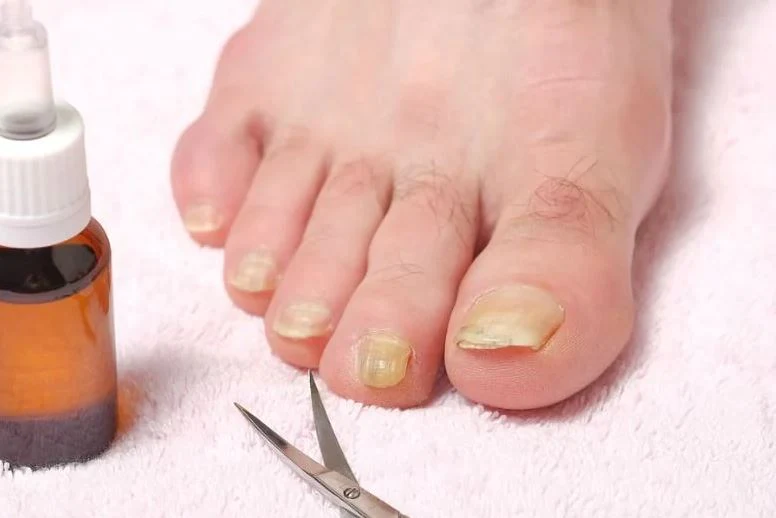Introduction
Nail fungus, also known as onychomycosis, affects millions of people around the world and causes discomfort and embarrassment. With an increasing interest in natural remedies for nail fungus treatment, many turn towards holistic approaches while others pursue advanced treatments like laser therapy. This blog explores natural solutions for removal of nail fungus and reviews the effectiveness of laser therapy offered at Revitalise London Dermatology Clinic.
What Causes Nail Fungus?
Before considering treatment options for nail fungus, it’s essential to identify its causes and symptoms. Onychomycosis typically results from dermatophytes, yeasts and moulds which thrive in warm, moist environments. Toenails tend to be more affected than fingernails; this can cause discoloured, brittle and thickened nails.
Nail fungus can be particularly susceptible to certain risk factors, including:
- Age: Older individuals are especially prone to nail infections due to reduced blood circulation and slower nail growth.
- Sweaty Feet: Excessive sweating creates a moist environment that fosters fungal growth.
- Public Facilities: Walking barefoot in communal showers, locker rooms or swimming pools increases the risk of contracting nail fungus.
- Athlete’s foot: If left untreated, this fungal infection can spread to nails.
- Weakening Immunity System: Conditions such as diabetes or HIV can make individuals more prone to nail fungus infections.
Early diagnosis and treatment are key in order to prevent the spread of this fungus and its complications. Consult a dermatologist, such as those at Revitalise London Dermatology Clinic, for proper diagnosis and management.
Natural Solutions for Nail Fungus Removal
Numerous natural solutions claim to remove nail fungus:
- Tea Tree Oil: Extracted from Melaleuca alternifolia plant, tea tree oil contains antifungal and antibacterial properties that may improve nail appearance. Dilute tea tree oil with a carrier oil such as coconut or olive oil before application to reduce irritation or allergic reactions.
- Apple Cider Vinegar: Diluted apple cider vinegar creates an acidic environment that inhibits fungal growth. Soak your feet in a solution of equal parts vinegar and water for 20-30 minutes daily.
- Garlic: Garlic’s antifungal properties can be enhanced by applying crushed garlic directly on nails or taking it orally as a supplement. However, its efficacy remains uncertain; conduct a patch test first to avoid irritation.
- Vicks VapoRub: This over-the-counter remedy contains camphor, eucalyptus oil and menthol and may have antifungal properties. Some people have reported improvements after applying Vicks VapoRub daily; simply apply a small amount onto affected nails twice daily to cover both nail and skin.
- Coconut Oil: Rich in medium-chain fatty acids, coconut oil has natural antifungal properties. Applying it to nails may reduce fungal growth and enhance their appearance. For best results, apply a small amount of coconut oil onto clean, dry nails twice daily for best results.
- Oregano Oil: Containing thymol and carvacrol, oregano oil has antifungal properties. Dilute it with a carrier oil before applying it topically on affected nails daily; however, some people may experience irritation or an allergic reaction; therefore a patch test is advised before use.
- Baking Soda: By absorbing moisture, baking soda may help prevent nail fungus from spreading. Mix equal parts baking soda and water together and apply the paste onto affected nails; leave on for 10-15 minutes, rinse it off, then thoroughly dry your nails.
Natural remedies can be effective, though results cannot be guaranteed. While some individuals may find relief through these treatments, others may need more sophisticated solutions for relief.
Laser Therapy for Proven Nail Fungus Removal
For those seeking a more advanced and effective treatment for nail fungus removal, Revitalise London Dermatology Clinic offers laser therapy. This procedure works by targeting fungal cells with focused light energy, ultimately eliminating them without harming surrounding tissue.
Benefits of laser therapy for nail fungus removal include:
- High Success Rate: Clinical studies have demonstrated the high effectiveness of laser therapy for treating nail fungus, with success rates reaching up to 80%.
- Minimal Side Effects: Laser therapy has far fewer side effects than oral medications and does not pose the risk of liver damage.
- Fast and painless: Laser therapy is a quick, non-invasive, and nearly painless procedure that usually only needs several sessions to achieve optimal results.
- Long-Term Benefits: With proper post-treatment care and hygiene, laser therapy can offer long-lasting relief from nail fungus.
Preventing Nail Fungus Recurrence
Prevention is key when it comes to nail fungus. Here are some practical strategies to reduce the chances of recurrence:
- Maintain proper hygiene: Wash your hands and feet frequently, then make sure your nails are dry before wearing socks or shoes. This will help you prevent nail infections.
- Maintain a Proper Nail Shape: Regularly trim your nails straight across and file the edges to keep your nail shape perfect.
- Select Breathable Footwear: Look for footwear made of breathable materials that allow air circulation, decreasing the likelihood of a humid environment favorable to fungal growth.
- Apply antifungal powders or sprays: Apply these products to your shoes and feet to protect them from fungal infections.
- Avoid walking barefoot in public areas: Wear flip-flops or sandals when using communal showers, locker rooms, or swimming pools to reduce your chance of contracting nail fungus.
Conclusion
While natural remedies may provide some temporary relief to individuals suffering from nail fungus, their effectiveness and results cannot be guaranteed. For those seeking a more advanced and reliable treatment option, Revitalise London Dermatology Clinic’s laser therapy is an excellent option. By understanding nail fungus, exploring natural remedies, and considering laser therapy as one option for removal needs, you can make an informed decision about which option is best suited for you.

